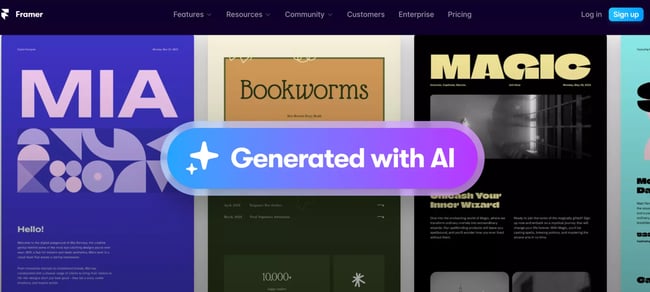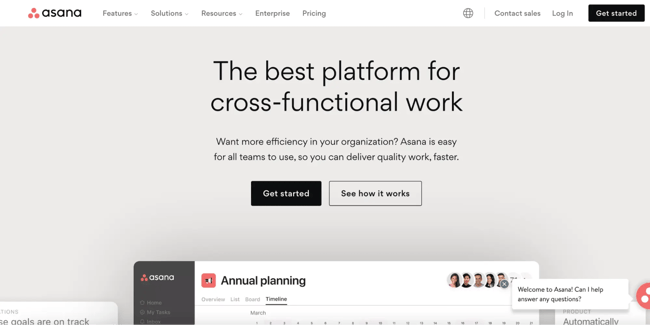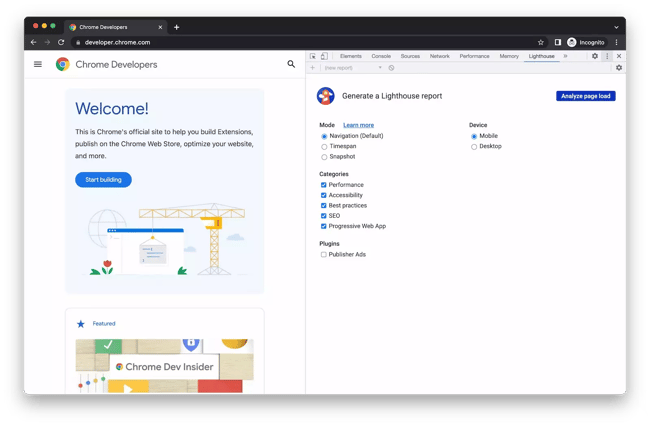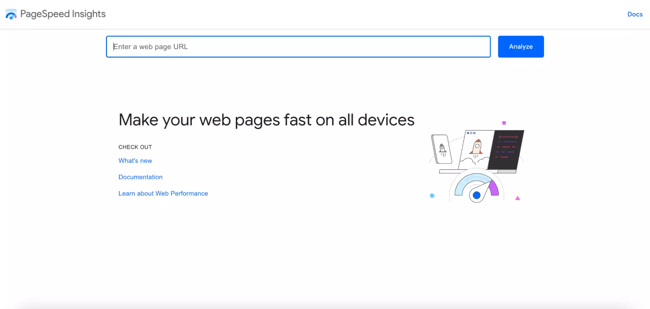With website design and development constantly changing, keeping your business' website ahead of the competition (and subsequently ensuring its ability to attract and retain visitors) is an ongoing process.
On a weekly, if not daily basis, you – and your team – should be looking at your business' website and thinking: “What can we do to improve it?”
A static, one-page brochure-type website, especially in B2B, will inhibit your ability to engage with website visitors and generate high-quality leads.
So to give you a better idea of what you could be doing to enhance your website and enable it to generate more qualified leads, we took a look at the top B2B website trends in 2024, as well as the top B2B websites, and identified the similarities they have.
Why is B2B web design important for B2B firms?
B2B web design is essential for B2B businesses seeking to establish an online presence and grow their customer base. Web design allows potential customers to learn more about a business’s offerings, capabilities, and commitment to customer service.
An intuitive and user-friendly interface encourages customers to explore a company’s offerings in detail, making it much more likely that they will drive sales growth.
In addition, well-designed websites can increase website engagement by increasing visibility on search engines and leveraging social media features such as posts, reviews, ratings and comments.
The goal of B2B web design should be creating an engaging experience for customers that reflects the level of quality and professionalism that a B2B firm stands for. Sites should have modern styles that are visually appealing while also being easy to navigate.
Quality content must be thoroughly researched and arranged concisely so customers can easily find what they need without confusion or wasted time. Making use of video content is also helpful in adding another layer of engagement for viewers who prefer visual information instead of just text.
By creating an optimal user experience through thoughtful web design, B2B businesses can optimise conversions from visits into leads much more efficiently than those with inadequate designs.
In this article, we explore 13 B2B web design trends shaping the industry in 2024.
1. Accessibility
Accessibility in UX is becoming an indispensable trend in B2B website design, driven by the need to cater to a diverse range of users. In the realm of UX design, accessibility signifies the creation of digital experiences that are accessible, understandable, and usable by all individuals.
This approach is not merely about compliance but embodies a fundamental shift towards inclusivity, allowing people with varied abilities to fully engage with digital products and websites.
The importance of integrating accessibility from the beginning of the design process cannot be overstated, as it enables seamless inclusion of features that cater to all users. Design considerations like colour contrast, content structuring for screen readers, and accommodations for different disabilities are crucial.
A collaborative approach involving designers, developers, and accessibility experts ensures that diverse user personas are considered, leading to products that are not just compliant with accessibility standards but also enhance user experience for everyone.
This inclusive mindset in design not only addresses legal requirements and avoids potential lawsuits but also expands audience reach and improves overall user satisfaction
2. AI-powered design
The emergence of artificial intelligence (AI) in web design is changing the way designers work. AI-powered design tools are revolutionising the creative process, and giving designers the power to create designs that reflect user data more accurately.
With AI tools, designers can automate many of the more mundane and repetitive tasks like resizing images or optimising layouts so they can focus on crafting aesthetically pleasing visuals.
AI gives web designers unprecedented opportunities to leverage user data for better designs. By analysing user behaviour online, designers can make informed decisions about how their designs should look and function within a certain platform.
For example, AI can provide insights into what style or colours resonate most with a specific audience segment so that websites look even more appealing and relevant to visitors. As all this data becomes increasingly accessible, AI-driven design will become an essential part of any website designer’s toolkit.

Image source: Framer.com
Tools like Framer can transform your ideas into web pages within seconds, offering a unique blend of layout, copy, and styling options.
3. Chatbots
Chatbots are another B2B website trend that remain popular in 2024, but how do chatbots improve the user experience?
Consumers have queries but sometimes businesses aren't in a position to answer them. This isn't because they don't have the answers – they do – it's because they can't respond.
Some businesses – start-ups and SMEs in particular – just don't have the resources. They have a small marketing and sales team and just don't have enough time in the day to respond to all enquiries.
However, what they do have is the content that answers consumers' questions.
So instead of spending hours responding to queries via email, one way businesses correspond with consumers is via chatbots.
Chatbots have reached a point of sophistication where they can analyse a website visitor's behaviour, the pages they have viewed and their contact record stored in the CRM to give accurate answers to potential questions or direct them to the right pages.
So instead of a customer service representative sitting on live chat all day, chatbots are being used by B2B websites instead to answer some of the more basic questions website visitors have, whilst customer service representatives instead converse with website visitors who are further into the buyer's journey.
Using this process, these businesses can scale their engagement activity despite having limited resources and direct website visitors to the most informative content.
4. Slide-in CTAs
Unlike pop-ups that are intrusive and interrupt the user experience, slide-in CTAs usually appear after a website visitor has been on a web page for a certain period or arrived at a certain point on the web page.
For example, slide-in CTAs can be configured to appear after x seconds have elapsed or a website visitor has scrolled to the bottom of the page. This way, the CTA doesn't interrupt the website visitor.
You could easily include a slide-in CTA on a blog, for instance, and that CTA could be linked to another relevant and interesting article.
Using slide-in CTAs you can increase your website's conversion rate and target website visitors who would have otherwise read your content and left.
When implementing them, be sure to consider the best practices of where to place CTAs on your website.
5. Deep scrolling
The days of ‘above the fold' are over and deep-scrolling websites have quickly become the norm. Web design, in general, has moved away from short pages and embraced the fact that deep-scrolling pages are simply more effective.
Think about how most people view websites today. More and more of us are using our mobile (and there's no option for anything other than scrolling). Not surprising when you realise that mobile search exceeds that of desktop search.
Deep scrolling will continue to be a standard in modern website design – and even more so as mobile devices become larger and more powerful. As time goes on, it won't just be a B2B website trend but a website essential.
6. Minimal design, bold fonts and bright colours
Websites are becoming more minimalistic – more sleek. Websites today put greater focus on empty space, large bold fonts and bright (but not overstated) colours to attract attention to specific areas.
Text is generally concise; business websites are moving toward a point where products and/or services offered are encapsulated in just a few words as website visitors may not necessarily have much time.

Image source: Asana
Take Asana's website, for example. Whilst it's not heavy on bright colours – it does have a very simple yet sleek design.
All of the elements are carefully segmented, the text is crisp and large and it makes good use of animated and interactive elements to keep website visitors engaged. The website's messaging is also straightforward and the product is described in just a few words.
7. Mobile optimisation
Remember we mentioned that mobile search exceeds that of desktop search? That's exactly why mobile optimisation is important and will continue to be in the years to come.
Most websites are optimised for mobile devices. Just resize your browser to half-screen size and that's essentially what you'll see if you were to view that web page on a mobile.
If your website is not optimised for mobile, you are missing out on a good chunk of website traffic and potential leads.

Image source: Chrome for Developers
One way you can test if you’re site is optimised for mobile is to use Chrome Lighthouse. The Lighthouse audit will analyse your site's performance on a 3G network and make recommendations for improving your site speed and performance, including mobile optimisation.
8. Micro-interactions
Micro-interactions are subtle yet powerful elements of a website or interface that provide an enhanced user experience. They involve tiny interactions between the design and the user and can become memorable in their own right.
A micro-interaction typically involves subtle changes in colour or style when users perform certain actions. For example, hovering over a CTA usually triggers a colour change to indicate that it is “clickable”.
Moreover, micro-interactions are often found as part of larger interactive designs that help keep the user engaged with the page or app. You might find them when scrolling through content on a page or interacting with various buttons or menus.
If done well, they can make for a more immersive and enjoyable experience for the user - allowing them to get lost in what they're doing rather than simply going through the motions without noticing the small details that can make the difference between good and great.
In short, micro-interactions may seem insignificant but they are quite important when it comes to providing an excellent user experience.
9. Prioritise page speed
Page speed is a crucial element of website performance and user experience. A website that takes too long to load will lose potential viewers and customers; According to a Google Consumer Insights report, up to 53% of users are known to abandon sites that take more than three seconds to load.
Companies should prioritise optimising their page loading times to keep visitors engaged and improve customer satisfaction.
Some common factors that can slow down page loading speed include image files that are not optimised, such as lacking title tags or metadata, as well as having too many elements on a given page at once.
Additionally, inadequate web hosting service can lead to poor loading speeds. To prevent these issues, websites should regularly audit their content for optimisation opportunities, ensure they have adequate speed settings through their web hosting package, and consider minimising the number of elements on a given page to improve load time performance.

Image source: PageSpeed Insights
To check your page speed using Google tools, you can use Google PageSpeed Insights, which analyses the performance of a website on mobile and desktop devices and provides a score between 0 and 100. A higher score indicates a better-optimised website for speed and efficiency.
10. Dark mode
Dark mode has become increasingly popular in recent years, with its ability to reduce the harshness of a bright screen being much appreciated by many users. Many people find dark mode more aesthetically pleasing and easier on the eyes compared to a traditionally white background.
With web design for B2B companies needing to progress and evolve to keep pace with current trends, integrating dark mode options will be of great benefit in 2024.
This is particularly true when considering circumstances where company websites are accessed during night shifts. A darker screen reduces the disruption of a user's circadian rhythm by softening direct exposure to bright light during these hours.
Additionally, dark screens can limit eye strain brought on by looking at a brightly lit monitor for prolonged periods, allowing the user’s natural cycle and comfort level to be maintained throughout their shift.
Consequently, creating websites that are compatible with dark mode will be extremely beneficial, providing both users and designers with a plethora of customisable options for an optimal experience.
11. Data visualisations
Data visualisation is a powerful tool for digital marketers, and with the right Strategy and design it can be used effectively to showcase data more easily and engagingly. Not just the basic charts and graphs but also creative, eye-catching infographics that make it easier for users to understand.
Visualisations are particularly useful in SaaS sales and marketing as they enable them to present complex data while highlighting key elements. This makes it quicker and easier to compare information vividly, making those metrics more accessible to both customers and potential leads.
When creating data visualisations it’s important to ensure they’re aesthetically pleasing as this plays a big role in how users perceive the information being presented. This is of the utmost importance especially when dealing with SaaS websites, as their design needs to look professional while also remaining easy to navigate and visually appealing at the same time.
12. UX design
User experience (UX) design is an integral part of web development. It helps ensure that visitors to your website have an easier, more enjoyable user experience when accessing it. UX design focuses on making sure the interface and content are easily accessible and intuitively user-friendly.
This includes making sure page speed is quick, information provided is easily understandable, and navigation through the site is straightforward. With today's modern technology becoming ever more complex, UX design becomes increasingly important for businesses to be successful in the digital world.
One key statistic has revealed just how important having an improved user experience can be: 88% of online customers are unlikely to recommend a business after having a bad user experience on their website. As such, businesses must invest in UX design if they are to remain competitive in their industry.
There's a wealth of knowledge and techniques businesses can use to enhance their customer experiences which range from psychology principles to easy-to-understand usability elements like meaningful visuals and animations.
How Huble can help you leverage B2B website trends
Effectively implementing these trends requires expertise and an understanding of how they fit into your unique business context.
This is where our company, Huble, comes into play. Our HubSpot website design service specialises in leveraging the latest B2B website trends to create engaging, efficient, and impactful online experiences that resonate with your target audience.
Our team of experts is adept at integrating these trends into a cohesive web strategy that enhances your brand, improves user experience, and ultimately drives higher engagement and lead generation.
We understand that each business is unique, and so are our solutions, tailored to meet your specific needs and goals.
Don't let your website fall behind the times. Speak with our team to learn more about how we can help you leverage these cutting-edge B2B website trends to your advantage.











.png)





